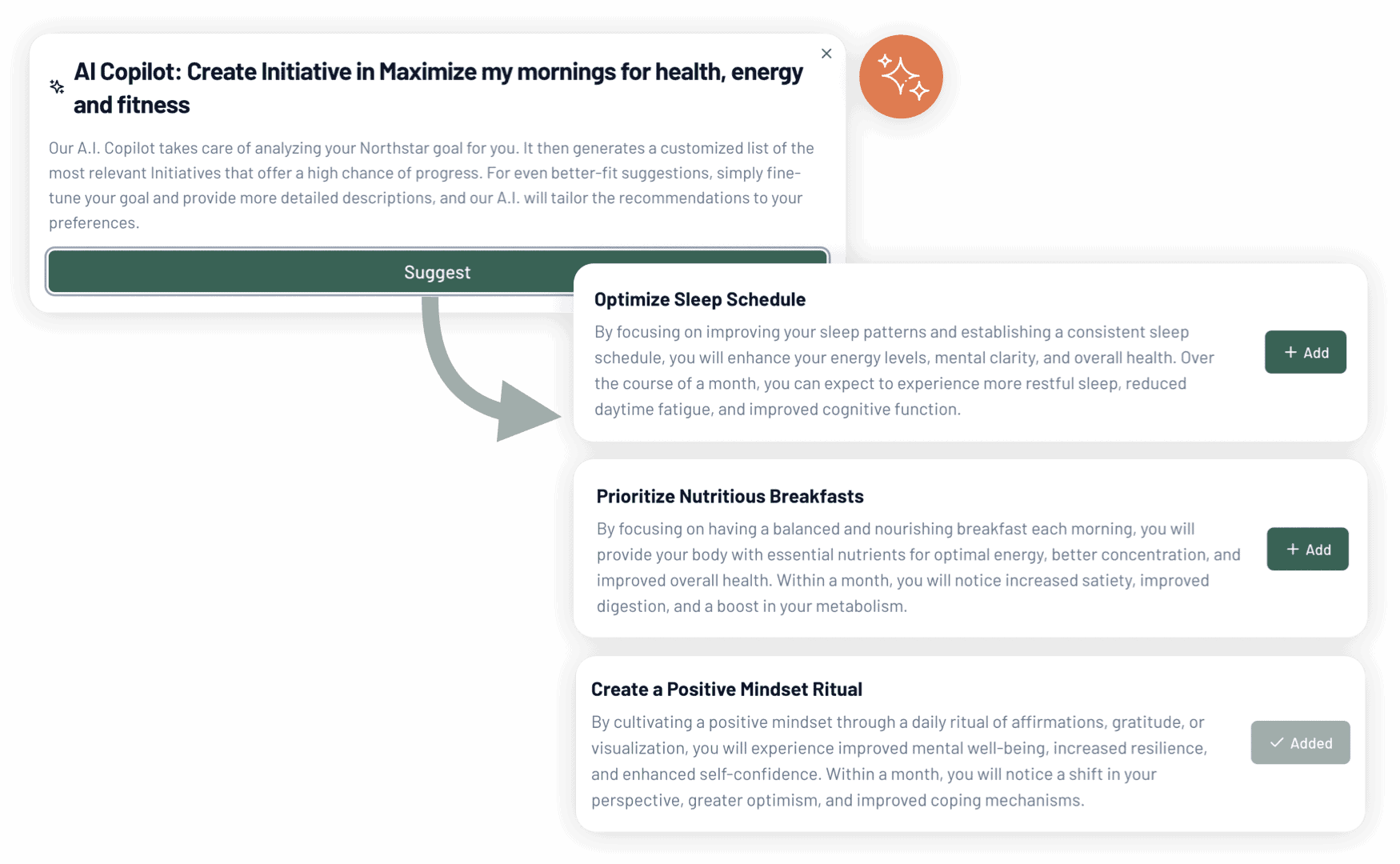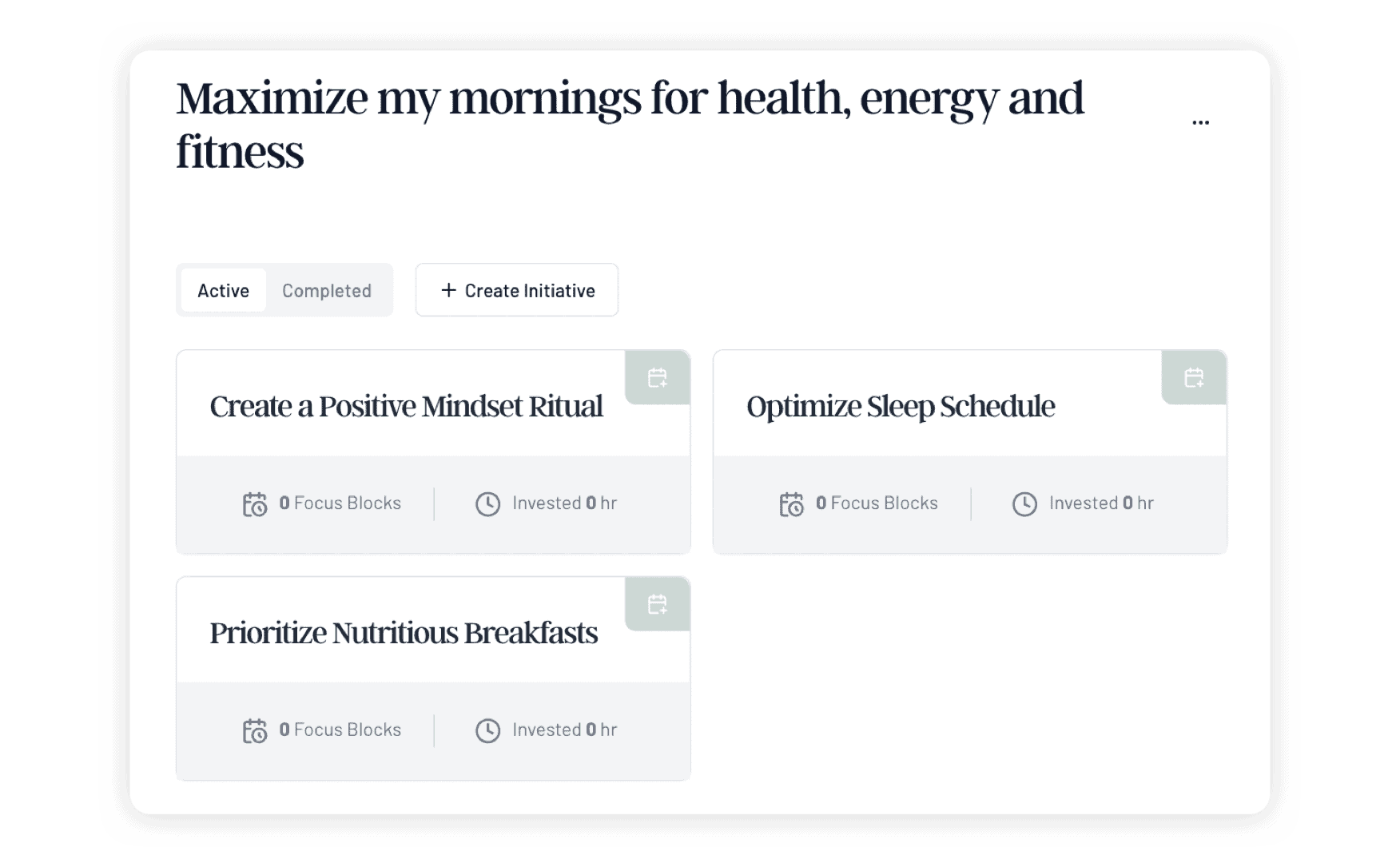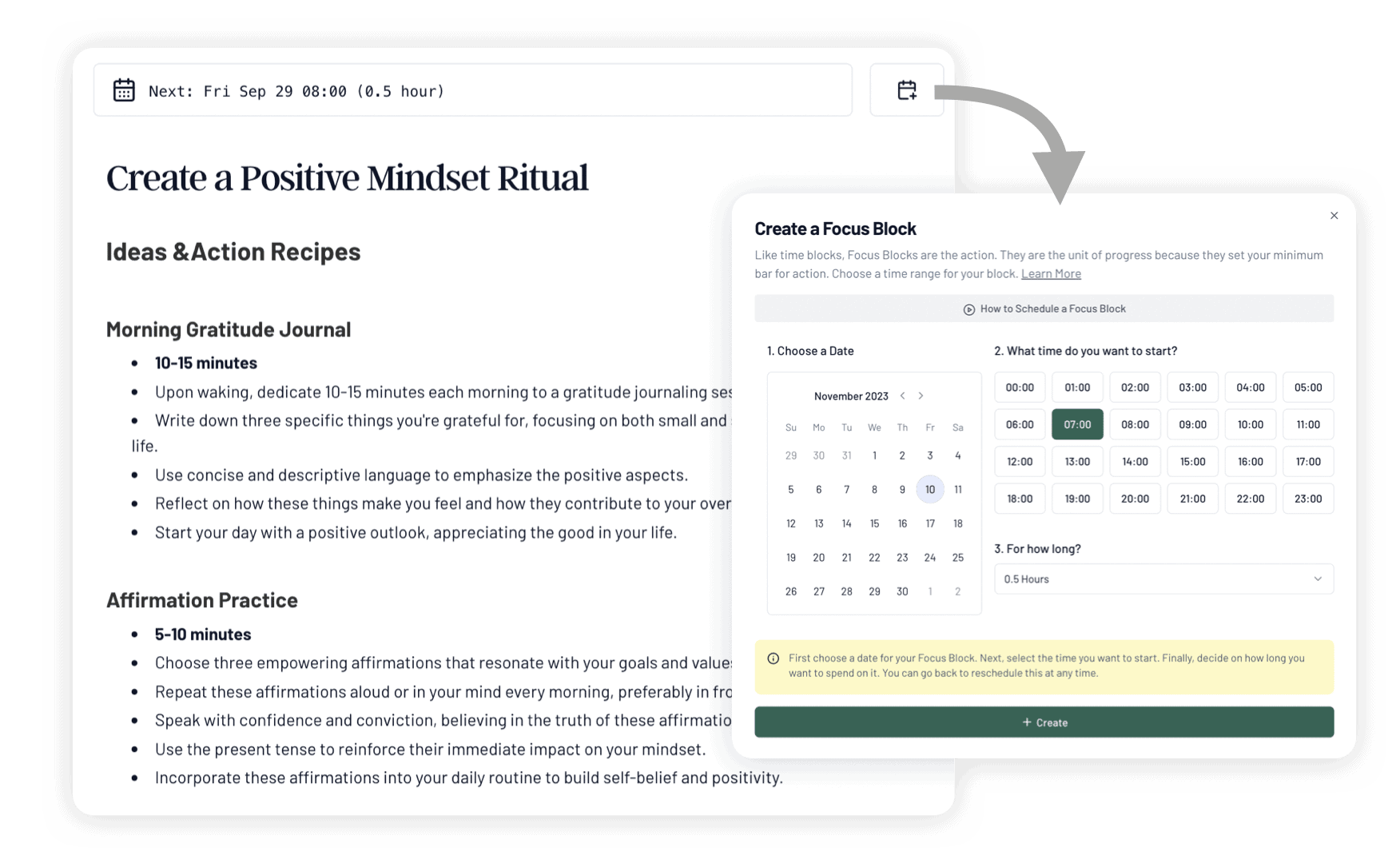Every day presents us with 24 hours – a seemingly fixed quantity. But how we perceive and manage those hours is the key difference between a chaotic, reactive existence and a life of purposeful, productive flow. Think of those 24 hours not as a rigid container, but as 24 blocks of potential, ready to be shaped. This is the essence of Time Flow: moving beyond simple to-do lists and embracing a dynamic, goal-oriented approach to your day. It’s about aligning your daily actions with your larger objectives, ensuring that every hour contributes to something meaningful.
Great thinkers and leaders, from Benjamin Franklin with his famously structured day (asking “What good shall I do today?” each morning – [1]) to modern creatives like Haruki Murakami [2]), understand this power of intentional scheduling. It’s not about micromanagement; it’s about creating a framework that reduces stress and anxiety [3], boosts productivity (potentially by up to 25% through effective prioritization – [4]), and paradoxically, increases freedom and creativity by automating the mundane.
Time Flow builds upon these principles. It’s not just about having a schedule; it’s about having a schedule that evolves with you, adapts to the unexpected, and keeps you focused on the bigger picture. It acknowledges that life rarely goes exactly as planned, and provides a system for navigating those “time gaps” – the moments between scheduled tasks that often get lost.
This guide will provide a step-by-step approach to building a daily schedule, infused with the principles of Time Flow. We’ll explore practical techniques, inspired by concepts like Paul Graham’s “Maker’s Schedule vs. Manager’s Schedule,” and show you how to create a day that’s not just productive, but also fulfilling.
Table of Contents
- Why a Dynamic Daily Schedule (and Time Flow) Matters
- How to Create a Time Flow-Infused Daily Schedule (Step-by-Step)
- 1. Define Your "North Star" and Initiatives (The Time Flow Foundation)
- 2. List All Potential Tasks and Commitments
- 3. Prioritize and Align with Initiatives
- 4. Allocate Time Blocks and Create "Action Recipes"
- 5. Use a Template or Tool (and Embrace Flexibility)
- 6. Execute, Adapt, and Optimize (The Time Flow Cycle)
- Example: A Time Flow-Enhanced Daily Schedule
- Tips to Master Your Time Flow Schedule
- Conclusion: From To-Do List to Time Flow – Owning Your Day
Why a Dynamic Daily Schedule (and Time Flow) Matters
Before diving into the “how,” let’s solidify the “why.” A well-structured daily schedule, especially one built on the principles of Time Flow, isn’t just a to-do list; it’s a strategic tool for:
- Structure and Reduced Stress: A pre-decided plan eliminates the constant guesswork and anxiety of “what next?” Research consistently shows that routines lower stress levels [5]. Time Flow takes this further by providing a flexible structure, allowing you to adapt to unexpected events without feeling derailed.
- Productivity and Efficiency Boost: Planning allows you to prioritize important work during your peak energy times. Studies link effective time management to higher job performance and well-being [6]. Prioritization alone can increase productivity by around 25% [7]. Time Flow emphasizes goal-oriented scheduling, ensuring that even small tasks contribute to larger objectives.
- Alignment with Big Goals: A daily plan connects your daily actions to your broader objectives [8]. Time Flow makes this alignment explicit by focusing on “North Star” goals and breaking them down into actionable “Initiatives.”
- Combating Decision Fatigue: Pre-planning reduces the number of small decisions you make each day, conserving mental energy [9]. Time Flow’s “Action Recipes” further reduce decision fatigue by providing pre-planned actions for specific time blocks.
- Accountability and Momentum: A schedule creates accountability. Each completed task provides a small win, building momentum. Time Flow enhances this by providing a system for tracking progress and adapting to changing circumstances.
In essence, a daily schedule, especially one incorporating Time Flow, is your dynamic game plan. It’s about proactive intention, not rigid adherence.
How to Create a Time Flow-Infused Daily Schedule (Step-by-Step)
Let’s build your dynamic daily schedule, incorporating the core principles of Time Flow. Remember, this is a personalized process; adjust these steps to fit your work style, job, and life.
Pro Tip: While paper planners have their charm, digital tools (calendar apps, Asana, Trello, or dedicated planner apps like the Time Flow System app) offer crucial flexibility for real-time adjustments [10].
1. Define Your “North Star” and Initiatives (The Time Flow Foundation)
Before listing tasks, Time Flow starts with clarity of purpose:
- North Star: What’s your overarching goal for this period (e.g., “Enhance my day for better health, energy, and fitness”)? This is your guiding principle.
- Initiatives: How will you achieve your North Star? These are specific, measurable objectives (e.g., “Prioritize Nutritious Breakfasts,” “Create a Positive Mindset Ritual”). The Time Flow System app can even suggest Initiatives based on your North Star using its AI Co-pilot.
This step moves beyond simple task management to goal-driven action.
2. List All Potential Tasks and Commitments
Now, brainstorm everything you need or want to do. Include work tasks, personal commitments, appointments, and errands. Don’t prioritize yet; just get it all down.
Tip: Break down large tasks into smaller, actionable components (e.g., “Draft outline for project X” instead of “Work on project X”). Note any time-specific events (meetings, appointments) – these are your anchors.
3. Prioritize and Align with Initiatives
Now, prioritize your tasks, but with a Time Flow twist:
- Connect to Initiatives: For each task, ask: “Does this contribute to one of my Initiatives? If so, which one?” This ensures every action has a purpose.
- Use the Eisenhower Matrix (Optional): Categorize tasks by urgency and importance [11]. Focus on important and urgent tasks first, then schedule important but not urgent tasks proactively.
- Define “Success”: What are your “must-dos” for the day? What would make you feel like you’ve made meaningful progress towards your North Star?
Focusing on top priorities boosts productivity and effectiveness [12] [13].
4. Allocate Time Blocks and Create “Action Recipes”
This is where Time Flow truly enhances traditional time blocking:
- Time Blocking: Assign specific time slots for tasks on your calendar (e.g., 9:00-10:30 AM – “Write project X proposal”). Be realistic about timing; overestimate rather than underestimate.
- Action Recipes (Time Flow): For recurring tasks or Initiatives, create “Action Recipes” – pre-planned sets of actions with allocated times (e.g., “Morning Mindset Ritual” – 15 minutes: 5 min meditation, 5 min journaling, 5 min light stretching). The Time Flow System app helps you collect and manage these.
- Schedule Breaks and Buffers: Include short breaks (every 60-90 minutes) and buffer time between major tasks.
- Match Tasks to Energy Levels: Schedule demanding tasks during your peak energy periods [14].
- Batch Similar Tasks: Group similar tasks (phone calls, emails) to reduce context switching.
- Maker vs. Manager Time: Understand your work style (Paul Graham’s concept – [15]). Makers need long, uninterrupted blocks; Managers operate in shorter slots. Schedule accordingly.
5. Use a Template or Tool (and Embrace Flexibility)
Use a consistent daily schedule template (digital is recommended for flexibility – [16]). Include recurring tasks, breaks, and personal routines. Color-coding can help visually.
6. Execute, Adapt, and Optimize (The Time Flow Cycle)
- Execute: Treat your schedule as a commitment, but…
- Adapt: Expect the unexpected. If something overruns, adjust subsequent tasks consciously. Use your buffers!
- Review and Reflect: At the end of the day, review your schedule. What worked? What didn’t? Reschedule unfinished tasks.
- Optimize: Use your reflections to refine your future schedules. Your daily schedule is a living document, constantly evolving.
Example: A Time Flow-Enhanced Daily Schedule
Here’s an example, highlighting the Time Flow elements:
- 7:00 – 8:00 AM: Morning Routine (Action Recipe: “Morning Energizer” – 20 min exercise, 10 min meditation, 30 min healthy breakfast prep). (Aligned with a “Health & Wellness” North Star)
- 8:00 – 8:30 AM: Plan & Preview Day. Review schedule, prioritize tasks, quick emails. (Sets the stage for a focused day)
- 8:30 – 10:30 AM: Deep Work Block: High-priority task #1 (related to Initiative: “Project X Launch”). (Uninterrupted focus on a key Initiative)
- 10:30 – 10:45 AM: Break (Action Recipe: “Quick Recharge” – 5 min walk, 5 min stretch, 5 min hydration).
- 10:45 AM – 12:00 PM: Continue Deep Work or Secondary Task (still aligned with an Initiative).
- 12:00 – 1:00 PM: Lunch Break (Action Recipe: “Mindful Lunch” – 30 min meal, 30 min walk/reading).
- 1:00 – 2:00 PM: Meetings/Collaboration (or moderate priority tasks if no meetings).
- 2:00 – 2:15 PM: Break (Action Recipe: “Afternoon Refresh”).
- 2:15 – 3:30 PM: Shallow Work Block: Emails, admin, routine tasks (batched for efficiency).
- 3:30 – 4:30 PM: High-priority task #2 (or adjust based on energy levels).
- 4:30 – 5:00 PM: Buffer/Wrap-Up. Address lingering issues, prepare for tomorrow. (Creates a clean end to the workday)
- 5:00 PM onwards: Personal Time (Action Recipe: “Evening Unwind” – family time, hobbies, relaxation).
Notice how this schedule incorporates Action Recipes, aligns tasks with Initiatives (and ultimately a North Star), and builds in flexibility.
Tips to Master Your Time Flow Schedule
- Align with Energy Cycles: Schedule demanding tasks during your peak energy.
- Single-Tasking: Commit to one task per time block; eliminate distractions [17].
- Batch Similar Tasks: Group similar tasks to reduce context switching.
- Maker vs. Manager Time: Know your work style and schedule accordingly.
- Embrace Buffers: Expect the unexpected and build in slack.
- Consistency and Habits: The power of a schedule comes from consistent use. Habits compound over time [18].
- Regular Reevaluation: Adapt your schedule as your life and priorities evolve.
Conclusion: From To-Do List to Time Flow – Owning Your Day
Moving from a simple to-do list to a Time Flow-infused daily schedule is about shifting from reactive to proactive time management. It’s about designing your day with intention, aligning your actions with your goals, and embracing flexibility.
The Time Flow System, with its focus on North Stars, Initiatives, and Action Recipes, provides a powerful framework for achieving this. It’s not just about doing more; it’s about doing the right things, consistently, and adapting to the ever-changing flow of life.
Start building your Time Flow schedule today. Experiment, adapt, and refine. You’ll be amazed at how much more you can accomplish, and how much more fulfilled you’ll feel, when you take control of your time and direct it with purpose. Remember, “Either you run the day, or the day runs you.” With Time Flow, you’re in charge.
















































